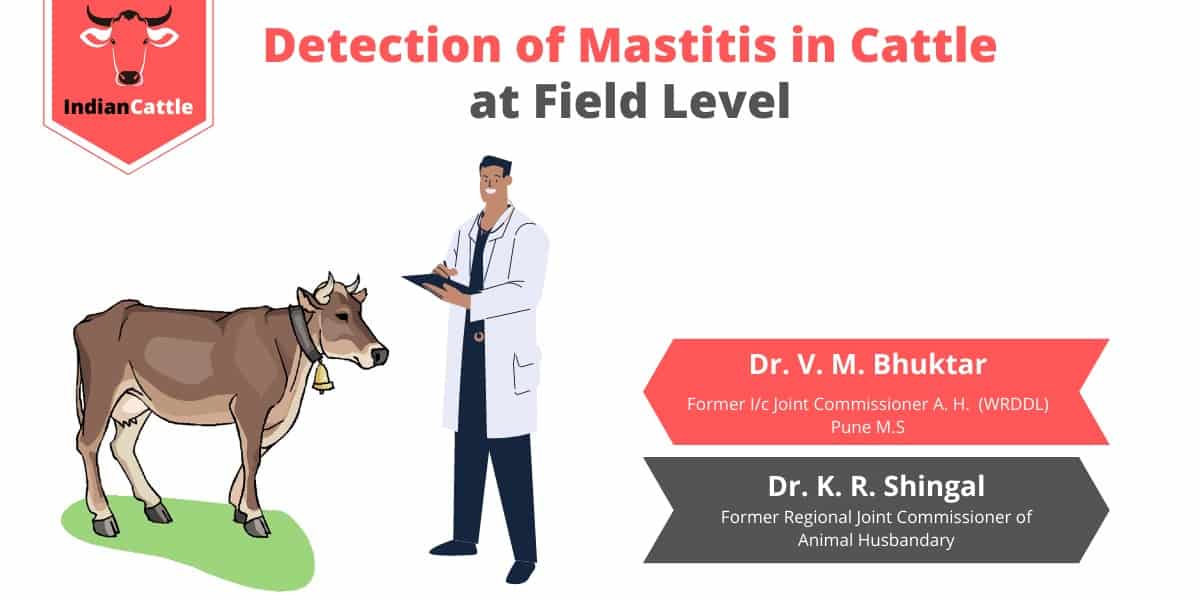
Detection of Mastitis in Cattle at Field Level
The problem of mastitis usually noticed all over the world in dairy animals, especially in exotic and crossbred cows. Mastitis is inflammation of mammary glands regardless of the cause. Mastitis is characterised by physical, chemical and usually bacteriological changes in the milk and pathological changes in the glandular tissue of udder. It is an economically important disease and if not corrected within time, it may take more days or weeks also and fibrosis may occur. So it is necessary to detect mastitis at early stage. At field level one can detect mastitis early and easily by following methods.
1) Physical examination of udder and milk
- Mastitis causes inflammation of mammary gland. Udder looks swollen, reddish, hot and painful sometimes fibrosis may noticed.
- Change in colour, smell and consistency of milk, Milk may watery, blood in milk, purulent, and clots in the milk noticed.
2) Strip cup test and use of tea stainer
- In the field this can be judged by actual handling the udder and teats and carrying out strip cup test, at field level using a tea stainer.
- Milk the first few streams in to a strip cup, check carefully for any change in colour or any watery appearance and clots. Clean the surface or strip cup and then check the milk from the next teat.
3) C.M.T.- California Mastitis Test
The California Mastitis Test is a diagnostic tool to aid in quick diagnosis of mastitis in dairy cow and for an udder health management programme. CMT is a simple cow side indicator of somatic cell count of milk. The principle behind this test is that the leucocytes in the milk are increased. Surface active agent as ‘Sodium Laurel Sulphate’ acts on the nuclear protein of leucocytes and produce jelly like mass. Plastic paddle containing four cups are specially designed for this test and 2-4 jets of fore milk from each quarter are collected separately in different cups of paddle. The paddle is then made almost verticle and excess of milk is allowed to drain. The remaining milk (2- 3 ml approximately) in each cup is added with equal quantity of CMT reagent. The mixture is then stirred round by circular movement of paddle with hand. If there is distinct gel formation which does not have tendency to disappear, then the test is considered as positive for mastitis.
Read: Diagnosis and Treatment of Mastitis in Cattle
| Dr. V. M. Bhuktar
Former I/c Joint Commissioner A. H. Western Regional Disease Diagnostic Laboratory (WRDDL) Pune M.S |
Dr. K. R. Shingal B.V.Sc. & A.H., M.V.Sc., N.D.B.P |
